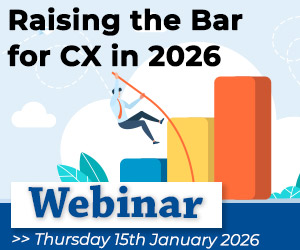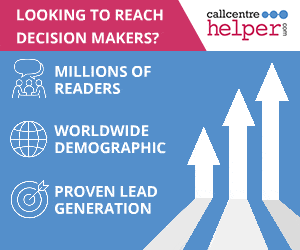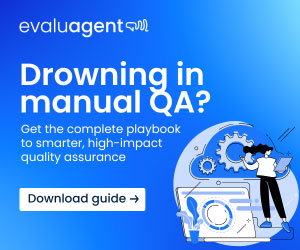We’re sure you’ve been hearing more and more about ESG and B Corp status, but what does this mean and how does it translate into the contact centre?
Our Editor – Megan Jones – spoke to Charlotte Cook, ESG Lead at Simplyhealth, and Rodney Assock, Head of Corporate Social Responsibility at Allianz UK, to find out what it really takes day-to-day to run a more sustainable operation.
What Does ESG Mean?
ESG stands for Environmental, Social, and Governance and is a set of standards used to measure an organization’s environmental and social impact.
“It’s always helpful to think about ESG in a pyramid view, starting with a broader view of what’s going on in the world. It’s quite simply about thinking about your long-term sustainability as an organization.
It is about delivering on what we need today without compromising future generations. In the broadest sense “How do we get on and do what we do today without causing problems in the future?” – Charlotte Cook, ESG Lead at Simplyhealth
Environmental
The E in ESG stands for Environmental.
Here, you focus on both the positive and negative impacts of your organization, investing time in understanding the risks and opportunities in play. This should be front of mind every day – and not just a one-off annual exercise.
So, what does environmental sustainability look like in day-to-day call centre life?
Moving towards a paperless operation is a good place to start, as it’s not just about the financial cost of the materials, but the environmental cost of where that paper comes from – including where the trees are grown and how far it’s travelled.
This can be particularly challenging if you have a profile of customers who like receiving paper letters. However, you can take steps to overcome this – including reviewing how digitally accessible your service is, as well as empowering your frontline to have positive conversations with customers about the switch.
“One of the things we did last year to accelerate customer adoption rates of a paperless approach was to partner with The Woodland Trust.
This gave our advisors a positive message to share that “if you do choose to make the switch today, not only will it positively impact the environment, but we’ll also make a donation on your behalf to The Woodland Trust to help communities to plant trees”. This approach really helped to set everyone up for success!” – Charlotte Cook
Social
The S in ESG stands for Social.
Selecting a charity partner can really help champion your social agenda – especially as a unified effort for one charity can make it far easier to document your impact and how the money has been spent.
For example, being able to report that 970 young people could have received training and education from the money you raised for Barnardo’s.
You could also consider putting a financial hardship fund in place for customers struggling with the cost-of-living crisis or other significant life events.
Governance
The G stands for Governance. This is about demonstrating your impact and holding yourself to account for being more sustainable – tracking progress and communicating to customers, shareholders, and employees alike.
It’s a tall order to bring all of this information together in one place! For example, Simplyhealth’s latest sustainability report spanned 80+ pages, covering everything from charity donations and where they’ve been spent, to their current environmental impact, right through to mapping out their current challenges and where they plan to next focus their efforts for improvement.
Does anyone even read it? Yes! They really do!
“It’s not just an in-house document left on the shelf! We’re increasingly finding that other businesses we work with are asking to see it.
Some won’t even work with us unless we can demonstrate that we’re reporting regularly against our performance. It’s fast becoming a licence to operate in the corporate space.” – Charlotte Cook
For more ideas from Simplyhealth, read our article: 20 Innovative Lessons from Simplyhealth’s Contact Centre
Striving for B Corp Status Can Demonstrate Governance Too
Another way to document your efforts is to strive for B Corp Status, which “refers to a certification for for-profit companies that meet high standards of social and environmental performance, accountability, and transparency. Certified B Corporations are verified by B Lab, a non-profit organization, to ensure they adhere to these rigorous criteria”.
B Corp Status can also be a real draw for attracting people to come to work for your organization.
“Our employees like that we’re B Corp Certified too! More often than not, it’s cited in job applications and interviews, because people really do value that they’re working for an organization that takes sustainability seriously. Our colleagues also feedback to us that it’s something they’re really proud of.” – Charlotte Cook
You Can Also Create a Strategy Around the United Nations 17 Goals of Sustainable Development
Alternatively, you could underpin your sustainability strategy by aligning with the United Nations 17 Goals of Sustainable Development “which are an urgent call for action by all countries – developed and developing – in a global partnership. They recognize that ending poverty and other deprivations must go hand-in-hand with strategies that improve health and education, reduce inequality, and spur economic growth – all while tackling climate change and working to preserve our oceans and forests.”
It’s best to pick out 2–3 goals where you really feel you can make an impact and build out your strategy from there.
“You can’t do everything! We’ve selected 3 of the 17 Goals to focus on: #8 – Decent Work and Economic Growth, #13 – Climate Action, and #17 – Partnerships for the Goals and hinge all our efforts around these for a coherent strategy that really makes an impact.” – Rodney Assock, Head of Corporate Social Responsibility at Allianz UK
Top Tips for Building Momentum Around Your Sustainability Strategy
Want to get started? Here are some top tips and advice to help build positive momentum around your sustainability strategy:
Get Everyone Involved in Selecting a Charity Partner
It can really help engagement for employees to vote on your charity partner for the year. For example, creating a short-list, putting together an awareness campaign, and then letting people make an informed choice. The earlier you can get people involved in the process, the better.
Give People the Freedom to Do Whatever They Want to Help
It’s a fantastic initiative to have a charity partner in place and centrally organize fundraising activities, but it can inadvertently discourage people from getting involved who perhaps want to try something different to support a local cause that’s close to their heart.
It’s important not to discourage these people, so it can really help here to adopt a mindset of saying “Yes, that’s a great idea, go for it!” However, it’s equally important not to fund-match every small initiative that comes up – as it can dilute your fundraising impact and make reporting harder at the end of the year.
A fair compromise can be to put these people into a hat for receiving a £50 donation to their chosen charity each month – helping to champion their efforts without distracting from the central corporate goals and impact.
If you are looking for advice on how to get your agents involved in charitable endeavours, read our article: Easy Ways to Make Your Contact Centre More Charitable
Try to Encourage Skills-Based Volunteering Too
Gardening and fence painting can be great ways to give back to the local community but also consider where your agents can lend their skills too!
For example, as people in the contact centre are so good at talking to customers, why not sign up to a scheme to connect willing volunteers with lonely people who want someone to talk to.
Be Very Conscious of How Much You Spend Setting Up Charitable Initiatives
Financially, you need to keep a close eye on what’s happening behind the scenes too and how much money is being spent on facilitating volunteering and charitable work.
There are lots of different apps and initiatives out there that can drain your resources, for example, apps to coordinate volunteering opportunities that come with an annual subscription fee – or fundraising platforms that charge a platform fee.
So, keep a close eye on your Return on Investment (ROI) when reviewing these options and always consider what can be achieved in-house and if the money would be far better spent as a donation.
You may find you want a bigger budget to be able to support these activities. For advice on this, read our article: Proven Ways to Get More Budget for Your Contact Centre
Make Sure Your Leaders Are Connecting the Dots for People
It’s easy for people to switch off when you talk about climate change or biodiversity loss, as they are huge problems that are being faced around the world right now.
Therefore one of the biggest roles of the leadership team is to connect the dots for people – making sure that they understand and appreciate that actually, when you’re striving to do X, Y, Z over here, their personal impact is [this], so they can see their tangible impact on the overall direction of travel on some of those really big topics.
Beware of “Greenwashing” and “Greenhushing”
You also need to watch out for “Greenwashing” and “Greenhushing”, as any accusations can quickly become PR nightmares and undermine the positive impact you are trying to have.
What do these terms mean?
- Greenwashing – When the general public accuse you of saying that you’re doing things that you’re not really doing (trying to get good publicity without doing the necessary work behind the scenes).
- Greenhushing – Is the extreme at the other end of the spectrum, where companies are doing really positive things but fear reprisal or saying the wrong thing, and so they say nothing. And they don’t celebrate or promote any of those positive impacts – and they just go quiet, because it’s safer reputationally not to say anything.
From a Governance perspective, it’s a really thin line to tread here, as you have to make sure that you are being transparent and that your data is robust.
This is where it can really help to bring in external experts to add credibility to your data reporting and make sure all bases are covered – for everyone’s peace of mind.
Running a Truly Sustainable Contact Centre Isn’t About Ticking Boxes
Running a truly sustainable contact centre isn’t about ticking boxes! It’s about embedding Environmental, Social, and Governance principles into the very fabric of how your operation runs day to day, and the rewards go far beyond compliance.
A well-executed ESG strategy can build trust, strengthen your brand, attract purpose-driven talent, and ultimately create a business that’s fit for the future. Sustainability is no longer a nice-to-have… It’s fast becoming a licence to operate.
How Sustainable Is Your Contact Centre Operation Right Now?
Join our LinkedIn community and let us know.
If you are looking for more information to help develop your contact centre, read these articles next:
- Get Your Outsourcing Partnerships Off to the Best Start
- Build a Parent-Friendly Contact Centre
- How to Better Prepare Your Contact Centre for the Future
Author: Megan Jones
Reviewed by: Jo Robinson
Published On: 2nd Jun 2025 - Last modified: 15th Sep 2025
Read more about - Call Centre Management, Culture, Leadership, Management Strategies, Top Story
















